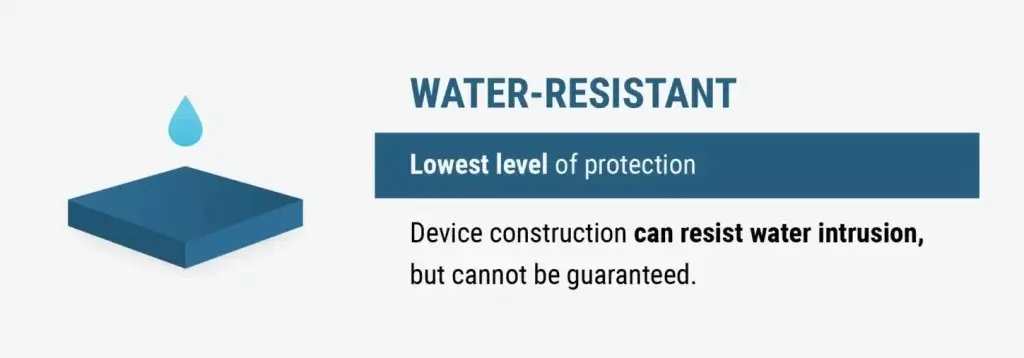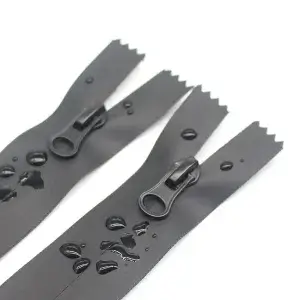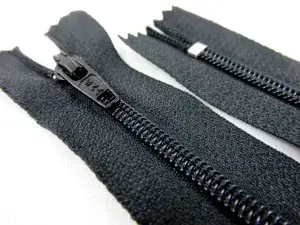Diving Deep: Unraveling the Mysteries of Authentic Waterproof Bags
- Latest update

Written by Jason
Waterproof bags have become an essential accessory for individuals who frequently find themselves in the midst of nature’s elements. Whether hiking through rain-soaked trails or kayaking across tumultuous rivers, the importance of these bags cannot be overstated. They serve as a reliable shield, protecting our valuable belongings from water damage and ensuring our peace of mind.
The Importance of Waterproof Bags: A Shield Against Water Damage
In a world where our lives are intertwined with technology and gadgets, protecting our electronic devices, documents, and other valuables from water damage has become crucial. The financial cost and emotional distress caused by water-damaged items can be significant. Waterproof bags offer a practical solution to this problem, acting as a barrier that keeps moisture at bay.
Beyond the realm of electronics, waterproof bags are equally important for adventurers and outdoor enthusiasts who rely on their gear to remain functional in harsh conditions. From cameras capturing breathtaking shots to meticulously packed clothing that ensures warmth during challenging hikes, these bags preserve the integrity of essential equipment.
The Need to Ensure Their Effectiveness: Trust but Verify
While most waterproof bag manufacturers claim their products are 100% watertight, it is essential to approach these claims with a healthy dose of skepticism. To truly rely on a bag’s waterproofness when venturing into wet environments or exposing it to heavy rain showers, we must ensure its effectiveness beforehand. One crucial aspect to consider is that not all “waterproof” claims hold equal weight.
Some products may possess only water-resistant properties rather than true waterproofing abilities. Understanding the difference between these two terms is vital when selecting the right bag for specific needs.
Moreover, even genuinely waterproof bags can lose their effectiveness over time due to wear and tear or improper handling. Therefore, periodically verifying and maintaining the waterproofness of these bags is essential to avoid any unwelcome surprises in the field.
In this comprehensive article, we will delve deep into the world of waterproof bags, exploring the factors that determine their waterproofing capabilities, testing methods to verify claims, and debunking common misconceptions. By the end of this journey, readers will have a thorough understanding of how to discern whether a bag is truly waterproof or merely water-resistant.
Understanding the concept of waterproofing
Definition of waterproofing
When it comes to the world of outdoor gear, the term “waterproof” holds immense significance. Waterproofing refers to a material or product’s ability to prevent water penetration, ensuring that its contents remain dry even in wet conditions.
This quality is particularly vital for bags designed to protect valuable items such as electronics, documents, or clothing during activities like hiking, camping, or boating. A truly waterproof bag serves as an impenetrable shield against water ingress and keeps your belongings safe and dry.
Differentiating between water-resistant and waterproof materials

 Water-resistant vs Water-repellent vs Waterproof: What’s the Difference?
Water-resistant vs Water-repellent vs Waterproof: What’s the Difference?
While both terms may seem similar at first glance, there exists a fundamental distinction between water-resistant and waterproof materials. Water-resistant materials possess the ability to resist the penetration of water to some extent but are not entirely impervious. They can repel light moisture or brief exposure to rain but are unable to withstand prolonged exposure or heavy downpours.
On the other hand, truly waterproof materials offer a higher level of protection against moisture by preventing any water penetration even under sustained pressure. These fabrics are specifically engineered with advanced technologies and coatings that create an impermeable barrier between the contents inside the bag and external moisture sources.
It is important to note that there are varying degrees of waterproofness among different products labeled as “waterproof.” Some may only be suitable for light rain showers while others can withstand submersion underwater for extended periods. Understanding these differences will help you make an informed decision when choosing a bag suited to your specific needs.
To determine whether a material is genuinely waterproof or just water-resistant, manufacturers often provide specific ratings based on standardized testing methods such as IPX (Ingress Protection Rating) or ASTM (American Society for Testing Materials). These ratings provide insights into a product’s level of protection against various elements including water.
Factors determining the waterproofness of a bag
Material selection: Commonly used materials (e.g., nylon, PVC, TPU)
When it comes to selecting the right material for a waterproof bag, manufacturers have several options at their disposal. Nylon, PVC (polyvinyl chloride), and TPU (thermoplastic polyurethane) are among the most commonly used materials due to their inherent water resistance properties. Nylon is a lightweight and durable synthetic material that offers excellent resistance to wear and tear.
It is often coated with additional waterproofing treatments or laminates to enhance its water repellency. PVC, on the other hand, is known for its exceptional waterproofing capabilities.
Its naturally dense structure makes it impermeable to water, ensuring that no moisture seeps through the material. TPU is a newer entrant in the field of waterproof bag materials but has gained popularity due to its high flexibility and durability.
It provides an excellent balance between strength and elasticity while offering remarkable resistance against water penetration. Manufacturers often opt for TPU when they require a material that can withstand extreme environmental conditions without compromising on waterproofness.
Evaluating their water resistance properties
To assess the water resistance properties of these materials, various tests are conducted by manufacturers or independent laboratories. These tests involve exposing samples of the material to controlled conditions where they are subjected to simulated rainfall or immersion in water. The evaluation process typically measures parameters such as hydrostatic head rating (water pressure necessary to penetrate the fabric) or absorption rate (amount of moisture absorbed).
Higher hydrostatic head ratings indicate superior waterproofing capabilities. Similarly, lower absorption rates signify reduced moisture retention within the fabric.
It’s important for consumers to understand these testing methods since they provide essential information about how well a particular material performs under real-world scenarios. By knowing these attributes, individuals can make informed decisions and choose a waterproof bag that best suits their needs.
Seam construction: Types of seams (e.g., stitched, welded, taped)
While the material plays a significant role in determining the waterproofness of a bag, seam construction is equally crucial. A poorly constructed seam can create weak points where water can penetrate, rendering even the most waterproof material ineffective.
Different types of seams are employed in manufacturing waterproof bags, each with its own level of effectiveness. Stitched seams are commonly found in lower-end bags and involve layers of fabric being stitched together.
Although stitching can create tiny holes, these seams are often sealed with tapes or coatings to minimize water infiltration. However, they may not provide comparable waterproofing performance to other seam types.
Welded or heat-sealed seams offer greater protection against water penetration. This process involves bonding the layers of fabric together using heat or ultrasonic technology, creating a strong and impermeable connection.
Welded seams eliminate puncture points like needle holes found in stitched seams, ensuring higher levels of water resistance. Taped seams complement both stitched and welded constructions by further enhancing their waterproofing capabilities.
Thin strips of specialized tape are applied over the sewn or welded areas to seal any potential gaps or weaknesses. The tape acts as an additional barrier against water intrusion and strengthens the overall integrity of the bag’s construction.
Closure mechanisms: Zipper types (e.g., coil, watertight)


The closure mechanism is another critical factor when assessing a bag’s ability to repel water effectively. Zipper types play a significant role here, as they determine how tightly the opening can be sealed against moisture ingress. Coil zippers are commonly used in many everyday bags but offer limited resistance against water penetration due to their inherent design.
The small gaps between coils allow some degree of moisture seepage under heavy rainfall or prolonged exposure to wet conditions. Watertight or waterproof zippers, often made of high-density plastics or rubber, are specifically designed to provide maximum water resistance.
These zippers have a distinctive interlocking mechanism that creates a tight seal when closed, preventing the ingress of water. They are commonly found in premium-quality waterproof bags and are highly effective in keeping belongings dry even during extreme weather conditions.
Roll-top closures are an alternative to traditional zipper mechanisms and offer excellent waterproofing capabilities. This closure involves folding the opening of the bag several times before securing it with buckles or clips.
The rolled top forms a watertight barrier that prevents any moisture from entering the bag’s interior. Understanding these closure mechanisms allows consumers to make informed decisions based on their intended use and the level of waterproofing required for their specific needs.
Testing methods for verifying waterproofness
Immersion test
A crucial aspect of determining the waterproofness of a bag is subjecting it to an immersion test. This method involves completely submerging the bag in water for a specified duration, typically ranging from 30 minutes to several hours. By doing so, we can assess whether the bag effectively repels water or if any moisture penetrates through its material and seams.
To conduct an immersion test, first, ensure that the bag is completely dry and free from any external moisture. Carefully seal all openings and closures of the bag to eliminate any potential entry points for water.
Then, immerse the sealed bag into a container filled with water, ensuring that it is fully submerged without any portion remaining above the water level. Interpreting the results of an immersion test requires careful observation.
If no water infiltrates into the interior of the bag after the specified period, indicating that it remains completely dry inside, then it can be considered truly waterproof. However, if even a minimal amount of moisture manages to breach the inner compartment during this test, it suggests that there may be flaws in its waterproof features.
Rain simulation test
Beyond just immersing bags in still waters, another effective testing method involves simulating rain-like conditions to assess their waterproof capabilities against dynamic elements such as rainfall. Rain simulation tests provide insight into how well bags protect their contents during real-world usage scenarios. In controlled environments specifically designed for rain simulation tests, bags are subjected to artificially created downpours with varying intensities and durations.
These simulated rain showers replicate natural rainfall patterns and measure how well bags withstand exposure to such conditions without allowing any moisture ingress. During these tests, bags are hung or placed under designated rain chambers while being exposed to a consistent and controlled flow of water.
The intensity and duration of the simulated rain can be adjusted to reflect different weather scenarios, ranging from light drizzles to heavy downpours. This comprehensive evaluation helps determine whether a bag is truly capable of repelling water and maintaining its waterproof functionality under realistic conditions.
By using such advanced testing methods as immersion tests and rain simulation tests, manufacturers can ensure the reliability of their waterproof bags. It also enables consumers to make informed decisions when choosing a bag suitable for their specific needs, providing confidence that their valuables will remain dry and protected even in challenging environments.
Verifying a Bag’s Claims of Being Waterproof
Researching Manufacturer Specifications and Certifications
When seeking reassurance about the waterproofness of a bag, it is essential to delve into the manufacturer’s specifications and certifications. Reputable manufacturers often provide detailed information about their products’ waterproof capabilities.
Look for technical data sheets, product descriptions, or user manuals that outline the bag’s specific waterproof features. These documents should mention the materials used, construction techniques applied, and any special coatings or treatments.
Furthermore, certifications from recognized industry organizations can be strong indicators of a bag’s reliability. For instance, some bags may carry certifications like IPX7 or IPX8 rating (Ingress Protection Rating), which signifies their ability to withstand water immersion at specific depths and durations.
Similarly, certifications from outdoor sports associations or quality assurance bodies add credibility to a bag’s claims. It is crucial to cross-reference these specifications and certifications with other sources of information to ensure accuracy and legitimacy.
Manufacturers occasionally exaggerate claims or use marketing jargon that may confuse consumers. Therefore, approaching this research with skepticism will enable you to make more informed decisions.
Reading Customer Reviews and Feedback
Customer reviews play a vital role in evaluating how well a waterproof bag performs in real-world scenarios. They provide valuable insights into its actual functionality under various conditions. When reading reviews, focus on feedback related specifically to the bag’s waterproof capabilities rather than tangential aspects such as aesthetics or comfort.
Look for trends in customer experiences; if multiple reviewers consistently praise the bag’s ability to repel water even during heavy rainstorms or water-based activities, it adds weight to its claims of being truly waterproof. Conversely, if there are consistent complaints about leaks or dampness inside the bag after exposure to moisture, it is cause for concern.
Keep in mind that individual experiences can vary due to factors like improper use, storage, or maintenance. Therefore, pay attention to reviewers who share details about their usage patterns and the conditions in which they tested the bag’s waterproofness.
Verified purchase reviews and feedback from trusted sources such as outdoor enthusiasts or professionals in relevant fields carry greater credibility. By examining both positive and negative customer experiences, you can form a well-rounded understanding of the bag’s performance and make an informed decision about its actual waterproof capabilities.
Verifying a waterproof bag’s claims involves thorough research into manufacturer specifications and certifications as well as reading customer reviews and feedback. By scrutinizing technical information provided by manufacturers and cross-referencing it with external sources of validation, you can assess the credibility of a bag’s claims.
Additionally, examining customer experiences will give you valuable insights into real-world performance. Remember to approach this process with skepticism and look for trends in both positive and negative feedback to make an informed decision about the bag’s true waterproofness.
Care and Maintenance Tips for Ensuring Long-Lasting Waterproofness
Proper Cleaning Techniques: Preserving the Immaculate Shield
When it comes to maintaining the waterproof integrity of your bag, proper cleaning techniques are paramount. Regular cleaning not only keeps your bag looking pristine but also removes any dirt or debris that may compromise its waterproof abilities.
Start by emptying the bag and gently shaking off any loose particles. For minor stains, a soft-bristle brush or sponge dampened with mild soap and warm water should suffice.
Gently scrub the affected area in circular motions, taking care not to apply excessive force that could damage the fabric or seams. For more stubborn stains or odors, a specialized gear cleaner designed for outdoor equipment can be used.
Follow the manufacturer’s instructions carefully and test a small inconspicuous area before applying it to the entire bag. Rinse thoroughly with clean water and allow it to air dry completely before storing or using it again.
Storage Recommendations: Safeguarding Against Unwanted Intruders
Proper storage is essential in preserving your waterproof bag’s longevity. Before stowing it away, ensure that it is completely dry inside and out to prevent any moisture from getting trapped and causing mildew or mold growth. If necessary, use a towel or cloth to blot excess moisture before leaving it in a well-ventilated area.
To protect your bag from potential damage, store it in a cool, dry place away from direct sunlight and extreme temperatures that could degrade its materials over time. Avoid compressing your bag excessively as this can strain the seams and compromise its waterproof properties.
Consider using a breathable storage container or cotton storage sack rather than plastic bags, as these can inadvertently trap moisture inside if not properly aired out beforehand. Additionally, avoid folding or creasing your bag unnecessarily when storing it long-term as this can lead to permanent creases and weaken the fabric.
Protective Measures: A Delicate Balance
While it is essential to clean and store your waterproof bag properly, it is equally important to strike a balance between protecting its integrity and overdoing maintenance. Excessive cleaning, harsh detergents, or abrasive scrubbing can degrade the bag’s water-repellent coatings or compromise the seams. Avoid using bleach, solvents, or strong chemicals as they can cause discoloration or damage the fabric.
Similarly, vigorously wringing out your bag after cleaning can stress the seams and compromise their effectiveness. Instead, gently squeeze out excess water and allow it to air dry naturally.
By adopting these care and maintenance practices into your routine, you can ensure that your waterproof bag remains a reliable shield against nature’s elements for many adventures to come. Taking these steps will not only prolong its functionality but also enhance its overall durability and performance—a small investment in time that promises long-lasting protection for your belongings against the forces of water.
Common misconceptions about waterproof bags debunked – Unveiling the truth behind common misunderstandings
When it comes to waterproof bags, there are a few persistent misconceptions that need to be debunked. One prevalent myth is that all “waterproof” bags are equally effective in keeping your belongings dry, regardless of the brand or price.
However, this couldn’t be further from the truth. The effectiveness of a waterproof bag depends on various factors, such as materials used, construction techniques employed, and testing standards followed by manufacturers. Myth: All “waterproof” bags are equally effective
This myth often leads consumers to make uninformed decisions when purchasing waterproof bags. It is essential to recognize that not all brands or products adhere to the same standards of quality and performance.
While some manufacturers invest in research and development to create highly effective waterproof solutions, others may simply use the term “waterproof” as a marketing gimmick without ensuring optimal protection against moisture. To avoid falling into this trap, one should meticulously evaluate product specifications and certifications provided by manufacturers.
Look for reputable brands that conduct rigorous testing and adhere to industry standards like IP (Ingress Protection) ratings or MIL-STD (Military Standard) certifications. These labels indicate that a bag has undergone specific tests and met predefined criteria for water resistance.
In addition, reading customer reviews can provide valuable insights into the real-world performance of different waterproof bags. Consider feedback from individuals who have tested these products in various conditions – their experiences can help you make an informed decision based on practical usage scenarios. Myth: Waterproof bags are only necessary for outdoor activities
Another common misconception is that waterproof bags are exclusively designed for outdoor enthusiasts engaging in activities like hiking, camping, or water sports. While these scenarios indeed demand reliable waterproof gear, the utility of such bags extends far beyond the realms of outdoor adventures. Waterproof bags are invaluable in everyday situations as well.
Imagine being caught in a sudden downpour during your commute, or accidentally spilling your coffee on your bag while rushing to work. In these instances, a waterproof bag ensures that your valuable electronics, documents, or personal belongings remain safeguarded from water damage.
Additionally, waterproof bags are highly useful when traveling to tropical destinations with high humidity levels or visiting locations prone to heavy rainfall. They offer peace of mind by protecting your essentials from unexpected weather conditions and potential accidents.
Debunking these misconceptions allows us to grasp the true value and importance of waterproof bags. By understanding that not all “waterproof” claims are equal and recognizing their relevance beyond outdoor activities, we can make informed choices and invest in high-quality solutions that truly protect our belongings from moisture-related hazards.
Conclusion
Recapitulation of key points discussed
Throughout this article, we have delved into the intricacies of determining the true waterproofness of a bag. We started by understanding the concept of waterproofing and distinguishing it from water resistance. We then explored the essential factors that contribute to a bag’s ability to repel water, such as material selection, seam construction, and closure mechanisms.
Next, we examined various testing methods used to verify a bag’s claims of being waterproof. Additionally, we discussed how researching manufacturer specifications and certifications, as well as reading customer reviews and feedback, can further aid in ensuring the reliability of a waterproof bag.
Emphasizing
It is crucial to emphasize that not all bags claiming to be waterproof are created equal. By considering the material composition, seam construction techniques, closure mechanisms employed, and any certifications or tests conducted by manufacturers when making your purchase decision, you can significantly increase your chances of acquiring a truly reliable waterproof bag.
While it may be tempting to assume that all “waterproof” bags offer similar levels of protection against water damage or leakage, this article has debunked this myth. The effectiveness of waterproof bags varies greatly depending on several factors we have discussed.
Investing in a high-quality bag that meets your specific needs will not only safeguard your belongings but also bring you peace of mind during outdoor adventures or daily commutes. Remember that proper care and maintenance are vital for preserving the longevity and optimal performance of your waterproof bag.
Following recommended cleaning techniques and storing it appropriately will ensure its continued effectiveness over time. Having access to accurate information about what makes a bag truly waterproof empowers consumers like yourself to make informed decisions when selecting one for your needs.
By understanding the crucial elements contributing to its functionality and conducting thorough research before purchasing, you can confidently choose a durable companion capable of protecting your valuables from the elements. So, embark on your adventures worry-free, knowing that your waterproof bag will withstand nature’s challenges and keep your belongings safe and dry.

